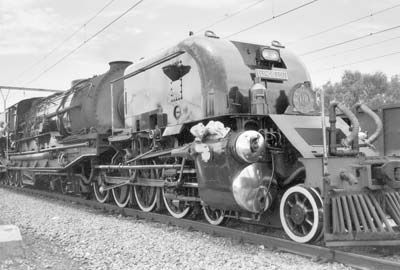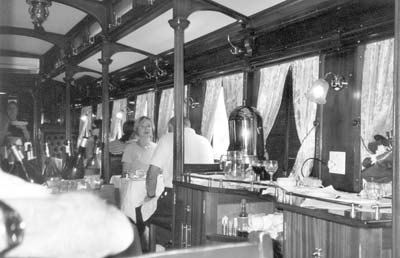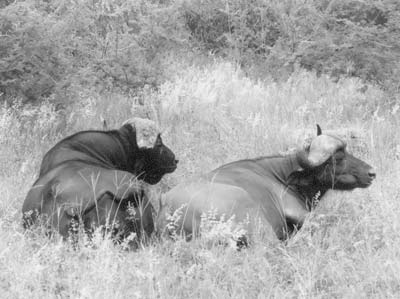Enjoyable trip to South Africa
My husband, Lewis, thought if we checked into South African Airways (800/722-9675, www.flysaa.com) at Washington Dulles Airport 3½ hours before our flight to Cape Town on Jan. 11, 2007, we might have a good chance of getting an exit-row seat, knowing they give preference to their SAA Voyager program members (which we are not). Alas, even at the gate, their representative curtly said, “No.”
But our 13-hour flight to Johannesburg was spent in relative comfort in 2-4-2 seating. It began with complimentary cocktails, and dinner was surprisingly good. South Africa is so much more accessible for people in the Washington, D.C., area now that SAA has direct flights.
Flight attendants asked passengers to completely lower window shades, as dawn would arrive very early. The advantage of a longer flight is one isn’t awakened at 3 or 4 a.m. U.S. time on arrival in Europe. I have found, when traveling east, that taking 3mg of melatonin at bedtime for the first several nights helps considerably with jet lag.
Our 10-day package tour, designed to fit most of our interests, was arranged by Visit Southern Africa (33 Kern Rd., Toronto, ON. M3B 1S9, Canada; 888/722-4872, www.visitsaonsaa.com), the tourism department of South African Airways, and cost $7,400 each. That was a splurge, for us, but I really wanted to experience Rovos Rail.
This price included, in addition to being met and given transfers between planes, trains and hotels, guided tours on two out of our three days in Cape Town.
In Cape Town they had booked us at the hotel Cape Grace (West Quay Road, Victoria & Alfred Waterfront; www.capegrace.com) for three nights. This is the most elegant hotel in which I have ever stayed.
On entering, we were greeted by a host and seated at one of two simple desks in the large foyer to register. She then accompanied us to our room, giving an explanation of the hotel’s many services and features, including complimentary chauffeur service anywhere in the city and an elaborate buffet and cooked breakfast. The rooms were large, with every amenity, and very tastefully decorated.
Cape Town, on the southern coast, is surrounded by magnificent beaches (the water was too cold for swimming) and gorgeous countryside of vineyards. Table Mountain, rising almost from the center of the city, is the big attraction. It is a one- or 2-hour climb for athletes who are up to the challenge or just a few minutes for those riding the Swiss-built revolving cable car. Standing at the top is truly seeing Cape Town from the air!
Our reluctance to leave Cape Town was superceded only by our excitement about boarding Rovos Rail (P.O. Box 50241, V. & A. Waterfront, Cape Town, 8002, South Africa; phone [+27 21] 421 4020 or fax 421 4022, www.rovos.co.za), “the most luxurious train in the world” — a dream come true, for me, a train buff.
Our reception was overwhelming, with five or six uniformed staff taking our luggage and escorting us up to more staff offering orange juice and champagne — at 9 a.m. — and into the special Rovos Rail lounge.
The vintage train is truly a museum piece on wheels. It is the most luxurious, romantic and decadent (though surely not the fastest) mode of transportation from Cape Town to Namibia, Dar es Salaam or Durban.
Our suite, a basic one, contained a queen-sized bed, a table with stocked refrigerator below, two upholstered chairs, two closets and ample room to store large suitcases. There was a bathroom with a shower and a hot-towel rail, as well.
It was most relaxing just gazing out the windows (all of which opened) at the flat countryside, lush vineyards and changing colors of the landscape as the train climbed 4,000 feet to the semidesert of the Karoo, which stretches across Africa to Ethiopia.
But it was great fun to spend time in the observation car with its bar, lounge area, small smoking section and open platform at the end of the train. All beverages were gratis, and there seemed to be people from all over the world there.
There also was a beautiful, more informal, plushly furnished lounge car in the center of the train, with sofas and armchairs and a small buffet table usually stocked with food.
Dressing for dinner brought a certain excitement. They requested jacket and tie and would loan the latter. The elegance of fancier dress fit the opulence of the Edwardian dining car we used; there were two dining cars, one built in 1911.
Dinner and lunch consisted of four courses with a choice of entrée. There was a very large selection of wines (again, all beverages were gratis), and in the public rooms the hosts were continually asking to bring passengers something.
The train’s major stop is the Diamond Mine in Kimberley, for two hours. Guests can tour the now-inactive mine, learn the history of the De Beers Mining Company and its founder, Cecil Rhodes, and purchase diamond jewelry.
On reluctantly departing the train in Johannesburg, we were taken to The Grace hotel (www.thegrace.co.za) in Rosebank, a suburb of the city. Unfortunately, tourists tend to avoid Johannesburg because of its high crime rate, but there are some interesting places to visit there.
We took a walk in the residential section around the hotel and were struck by all of the homes with high brick walls topped with barbed wire with electrified wire above it and armed security guards on every third corner. In spite of that, we fell into a conversation with the owner of one of the homes, Elizabeth, who had walked outside.
After a few minutes she invited us in for tea, and over the next couple of hours we learned a lot about South Africa. We invited her to have dinner with us at our hotel, and she accepted. We were grateful to have met a gracious native with whom to spend an educational evening.
The next morning we were taken to the Johannesburg airport for our flight to Kruger and from there we were driven to Leopard Hills Private Game Reserve (www.leopardhills.com) in Mpumalanga, in the Sabi Sands Game Reserve, which is part of Kruger National Park. The lodge consists of eight glass-fronted air-conditioned suites, which look from the outside like grass huts, each with its own sundeck and rock plunge pool.
There were two game drives a day, early morning and late afternoon, in open, specially modified Land Rovers. Each had a guide as well as a scout, who had an uncanny ability to identify animal tracks and spot animals in the brush. During each drive, we stopped in a clearing and they brought out a repast appropriate to the time of day.
We saw many lion prides, as well as individual lions strolling within inches of our vehicle, appearing oblivious, plus giraffes, white rhino, cape buffalo, a leopardess, hippos, elephants and many gazelles and other antelope.
On the last day we were driven back to MQP Airport for our short flight back to Johannesburg followed by a one-stop flight back to Washington.
SHEILA COHEN
Chevy Chase, MD



